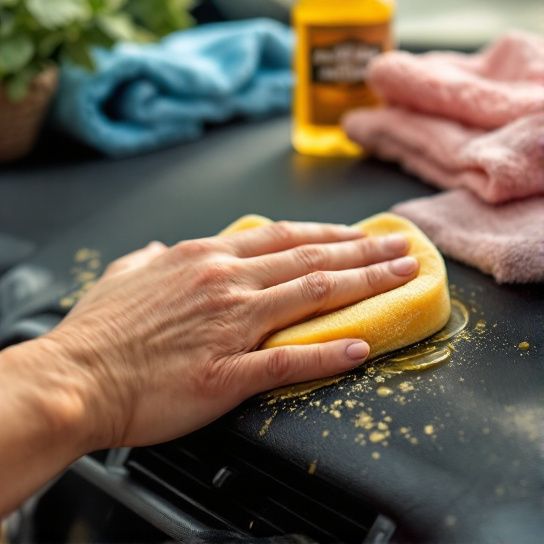Have you ever noticed how certain rooms just feel better? You walk into your living room and suddenly you’re breathing easier. Everything seems at peace. Or maybe you’ve experienced the flip side—rooms that feel instantly uncomfortable, stale, or downright oppressive. Often, what you’re sensing is humidity, that sneaky little thing that makes all the difference. Let’s talk about mastering your living space’s humidity balance for a healthier, happier life.
What’s the Deal with Humidity Anyway?
Ah, humidity. It’s one of those things that’s tricky to get right indoors. Too much, and your home feels sticky and stuffy. Too little, and it’s dry, uncomfortable, and not great for your skin. Humidity can even affect your favourite natural beauty products. Yes, really! Weather conditions, like in midsummer when you feel the air is nearly drinkable, or winter when your lips rival dry prunes, prove that getting it right can be an art form.
In essence, humidity refers to the amount of moisture in the air. It’s simple enough, but finding that sweet spot can seem more like handling an old watch mechanism—every adjustment shifts something. But stay with me. Because once you get that balance just right, everything else falls into place, including how your skin feels.
Tracking Down the Perfect Humidity Levels
So, let’s dive in. What’s the normal range we’re aiming for here? Ideally, indoor humidity levels should hover between 30% to 50%. More startling than your morning alarm, I know—big numbers mean big missteps in comfort. Too high, and you’re creating an accommodation invite for molds and creepy dust mites. Too low, however, and your throat feels like sandpaper and your skin like sandpaper. Tough choice.
Indoor Tips to Stay in the Zone
- Invest in a Hygrometer: First off, you need to know where you stand. A hygrometer will be your best friend—seriously, this little tool tells you exactly what your humidity levels are. Plus, I find gadgets that tell more about the environment go incredibly well with coffee talk. “Did you know it’s 35% in here?” Instant conversation starter.
- The Role of Natural Beauty Products: I know, it feels like a leap from air to skincare, but hang with me here. Your skin reacts directly to humidity levels. So a balance not only improves air quality but also enhances how well your beauty products perform. Skin holds moisture better. Think of natural beauty products as a final layer sealing in that hard-won balance of moisture.
Balancing Act: Tools and Tricks

Alright, once you’re squared away with tracking those humidity numbers, it’s time to orchestrate a tactical operating room set-up for your house. There’s an arsenal of options waiting to tailor your home environment to what’s best for both you and whatever you’ve felt has grown in the corners.
Dehumidifiers and Humidifiers: Dream Team
- Dehumidifiers: Best pals during the steamiest months or in naturally humid regions. Dehumidifiers sip excess moisture from the air, leaving behind a livable environment passengers appreciate getting home to. And there’s bonus round—they help prevent that gross mold growth. Score!
- Humidifiers: Your winter pals! When the heating zaps away all living moisture, or if you inhabit an almost desert-like climate (except with fewer fun sand dunes), spin these up to gently rehydrate your environment, allowing your natural complexion to thrive using minimal product application.
Going Green with Your Balance
If you prefer something a touch more creative (and living), houseplants are moisture warriors. Yes, that snake plant or peace lily isn’t just there because it looks modestly chic.
- Common Houseplants for Humidity:
- Peace Lily: Ideal for our humidity needs since they not only regulate moisture levels but also improve air quality.
- Boston Fern: Extra leafy creatures, adept at humidity control and applauded in low humidity.
- Spider Plant: Hardy, low-maintenance (a friend-to-all type), helping steady that middle range.
Apart from achieving balance, having greenery around is scientifically linked to boosting your mood. Who knew happiness could look so leafy?
Tailoring Your Home Environment for Diverse Needs

Ah, here’s a reality—no two rooms treat humidity levels the same way. Like people in a quirky sitcom, everyone has their way of reigning humidity in. Kitchens? Warm and moisture-heavy baking and boiling grandeur. Bathrooms? Nothing like couples showering to distort balance if unchecked. These tips could tailor directly for every room cohort in need:
Kitchen Conundrums
- Ventilation Is Key: Open windows, use fans—anything to help moisture escape during homemade soup days.
- Check Seals: Regularly ensure seals or lids on food items to minimize unnecessary dampness justice thieves would fear and kitchen quarrels.
Cozy Bedrooms
- Maintain Balance: Using room-control gadgets like humidifiers where they best fit. Trust me, waking up referred feeling short across your respiratory voice system is even more unwelcome when sleep-deprived.
And always remember—the shift isn’t instant. The minute adjustments make the grand scheme worth every moment.
Key Role of Natural Beauty Products
It’s astonishing how home humidity directly impacts things like moisturizers or those essential natural beauty products. Dry indoor air can steal moisture from your skin unpredictably, messing up that refreshing glow you’ve been working toward. Balanced humidity helps:
- Enhancing Product Use: Supporting efficient use of natural ingredients from your favorite skincare routines, making every application count.
- Preserving Product Integrity: When properly stored, these items will perform at peak potential without the inner becomes aversion therapy kryptonite from clashing elements.
Why spend time on that moisturizing serum if humidity’s going to cling like an ill-fitting layer?

Comparative Breakdown of Humidity Management Solutions
For ease, let’s snatch a comparative glance, so you choose what precision better suits lifestyle differences:
| **Solution** | **Pros** | **Cons** |
|---|---|---|
| Hygrometer | Simple, informative, straightforward | Needs calibration skills (basic concern) |
| Dehumidifier | Impressive at mold/dust control | Ongoing maintenance + electricity cost |
| Humidifier | Relieves dry air, skin-friendly | Clean regularly to hinder biofilm haunt |
| Houseplants | Natural air/moisture balancers | Varying care levels + sunlight hot potatoes |
Normalize These Home Habits
Habits become allies when fighting erratic humidity levels. Practicing nuanced day-to-day tasks subtly contribute just as actively as any device would—hoorah! Play along with these suggestions:
- Regular Ventilation: Start fresh each morning; it’s as efficient as having your glass of juice to digest swifter.
- Utilize Cooling Options: Ceiling fans disperse moisture in summery deluge indoors without skyrocketing electric cost overhead.
- Check Weather Stripping: Look for gaps in insulation around doors/windows—that cold or draft wind might be unbidden dry greedily increasing moisture cravings.
Final Thoughts on Embracing Natural Comfort
Humidity balance is unmatched while breathing intricacies into redefining familiarity in tables and sanctuaries used, minus theatre-like pretense. More than simple comfort deflector use, it’s a phenomenon cradling both forged coziness tendencies elaborately desired partner-style gatherings or distance tranquil solace moments, without unfamiliar aisles detour meandering via erratic indoor climate oscillations.
Surround yourself with balance—a tangible, every-day balance you control uniting tangibles accentuating synergy, simultaneously shielding interactions remaining unexplored. Inviting evolution, in practice empowering gears motive moisturized wind—an echo uniqueness captures one’s peace.
So give it a try; you might just become a humidity balance connoisseur. You’ll marvel at how invigorative life achieves indoors noticeably allied, loyally inspired every significant touch of breath away from launching adventurous steps widely beyond.
Frequently Asked Questions
What does it mean if a product is labeled as “natural” in the beauty industry?
If a product is labeled as “natural,” it does not necessarily mean it contains no synthetic chemicals. The term “natural” is not defined by the U.S. government, so products may still include some synthetic ingredients. Natural cosmetics typically contain ingredients like mica, silica, and clay that are found in nature and used directly in the product without significant chemical alteration[1][3].
Why aren’t all cosmetics natural if they are supposedly better for the skin?
Several reasons contribute to why not all cosmetics are natural. Cost is a significant factor, as organic ingredients are generally more expensive than synthetic ones. Additionally, natural ingredients can be challenging to blend and preserve without using proven chemicals, which are necessary for maintaining the product’s stability and preventing bacterial growth. The desired qualities in cosmetics, such as lightness and easy absorbability, often require well-known chemicals[1][3].
When should someone consider using natural beauty products or skincare?
Consider using natural beauty products or skincare if you have a known allergy to chemical ingredients like preservatives. However, it is crucial to check the ingredients carefully, as natural products can also contain allergens. Patch testing is recommended, especially for those with sensitive skin or known allergies[1][3].
What are the potential benefits and challenges of using natural skincare products?
Natural skincare products can be gentler on the skin, free from harsh chemicals, and more in harmony with the body’s natural processes. However, they can be more costly due to the use of ethically sourced and organic ingredients. Additionally, natural products may not work for everyone, and their effectiveness can vary based on skin type and conditions. It is also important to note that natural ingredients can still cause allergies and may have variations in consistency and scent due to natural ingredient variations[3][5].
References

